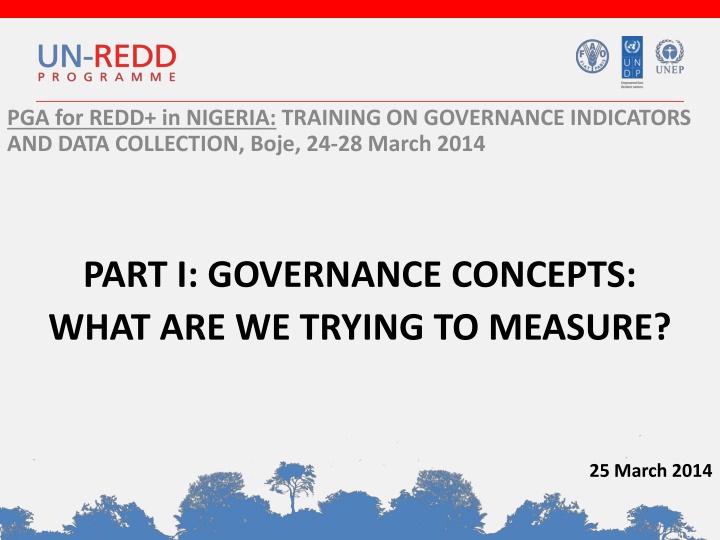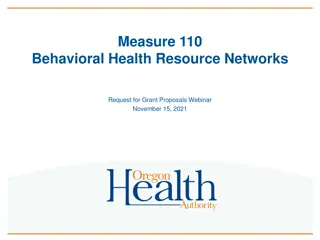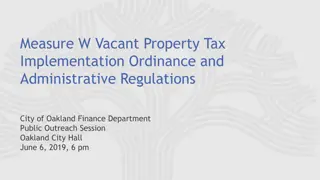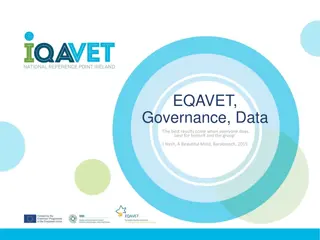Governance Concepts: What Is Governance and How to Measure It
Governance encompasses mechanisms, processes, and institutions shaping power exercise and decision-making on public matters. Democratic governance involves inclusivity, fair social rules, gender equality, non-discrimination, and responsive policies. Measuring governance involves considering corruption risks, perceptions, and desired changes. Transparency, accountability, participation, and other pillars of integrity play crucial roles in governance evaluation.
Uploaded on Feb 17, 2025 | 4 Views
Download Presentation

Please find below an Image/Link to download the presentation.
The content on the website is provided AS IS for your information and personal use only. It may not be sold, licensed, or shared on other websites without obtaining consent from the author.If you encounter any issues during the download, it is possible that the publisher has removed the file from their server.
You are allowed to download the files provided on this website for personal or commercial use, subject to the condition that they are used lawfully. All files are the property of their respective owners.
The content on the website is provided AS IS for your information and personal use only. It may not be sold, licensed, or shared on other websites without obtaining consent from the author.
E N D
Presentation Transcript
PGA for REDD+ in NIGERIA: TRAINING ON GOVERNANCE INDICATORS AND DATA COLLECTION, Boje, 24-28 March 2014 PART I: GOVERNANCE CONCEPTS: WHAT ARE WE TRYING TO MEASURE? 25 March 2014
What is governance ? GOVERNANCE Governance is defined as comprising the mechanisms, processes and institutions that determine how power is exercised, how decisions are made on issues of public concern, and how citizens articulate their interests, exercise their legal rights, meet their obligations and mediate their differences
Democratic Governance (UNDP Definition) Democratic governance means that people have a say in the decisions that affect their lives and that they can hold decision-makers accountable. It further entails that the rules, institutions and practices that govern social interactions are inclusive and fair, that women are equal partners with men in private and public spheres of life, that people are free from discrimination based on race, ethnicity, class, gender or any other attribute, and that the needs of future generations are reflected in current policies. It also means that economic and social policies are responsive to people s needs and their aspirations, that these policies aim at eradicating poverty and expanding the choices that all people have in their lives, and that human rights and fundamental freedoms are respected.
Components of democratic governance Participation Representation Rule of law Transparency Accountability Effectiveness Efficiency Responsiveness Equity HOW TO MEASURE GOVERNANCE?
Measuring governance: A word of caution: Not everything that counts can be counted, and not everything that can be counted counts. Albert Einstein
Questions to consider when trying to measure corruption Measuring the disease or the cure? Measuring corruption or corruption risks? Measuring the enabling environment Measuring the change you want to see Measuring changes perceptions Focus on likelihood and impact Examples from Indonesia PGA Corruption Risk Assessment (CRA) tool (www.tinyurl.com/redd-cra-v2)
The pillars of integrity Transparency - Access to information By whom? Information about what? Is it usable? Is it used? Accountability - Feedback - Complaints - Sanctions Participation How to measure full and effective ?























